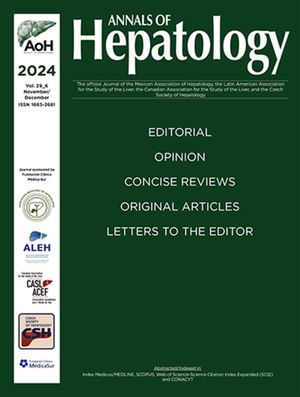
Abstracts of the 2023 Annual Meeting of the ALEH
Más datosNo
Introduction and ObjectivesHepatic encephalopathy (HE) is a complication of liver failure whose clinical identification is commonly delayed. Measurement of parameters reflecting HE would be desirable in clinical practice. Metabolomic study using nuclear magnetic resonance (NMR) represents a strategy in this regard, with advantages such as detecting numerous types of metabolites. Objetive: To characterize the serum metabolomic profile (SMP) of various clinical stages of HE severity using NMR.
Patients / Materials and MethodsObservational, cross-sectional, analytical, prospective study. Anthropometric, hematologic, and biochemical parameters were evaluated in patients >18 years: 15 controls (C), 18 hepatopathy without HE (HSHE), 11 minimal HE (HEM), 9 West Haven (WH) I, 12 WHII, 9 WHIII, and 8 WHIV. SMP was analyzed by NMR, characterizing the profile per patient, study group, and analyzed by PLS-DA using MetaboAnalyst 5.0 platform.
Results and DiscussionSignals from 45 metabolites were assigned, quantifying 43. PLS-DA showed differences in SMP between groups, with metabolite concentrations decreasing as HE severity increased, except for 3-methylhistidine, which increased with HE severity. Acetone, lysine, glycerol, and serine were higher in C compared to HSHE and HEM; proline, cysteine, threonine, alanine, 3-hydroxybutyrate, and isoleucine were higher in HEM or HSHE compared to WHI and WHII. The metabolite/creatinine index identified 14 metabolites that differentiated the groups (3-methylhistidine, acetone, proline, 3-hydroxybutyrate, lysine, cysteine, threonine, glycerol, glycine, lactate, alanine, serine, valine, and isoleucine).
ConclusionsSMP differed among the groups, with metabolites implicated in severe HE including arginine, isoleucine, valine, alanine, histidine, threonine, glycerol, serine, tyrosine, glutamine, phenylalanine, formate, ornithine, tau-methylhistidine, and methionine. Implicated metabolic pathways were phenylalanine, tyrosine, and tryptophan; phenylalanine; histidine; glycine, serine, and threonine; glutathione. WH has an objective and measurable explanation using metabolomics.









